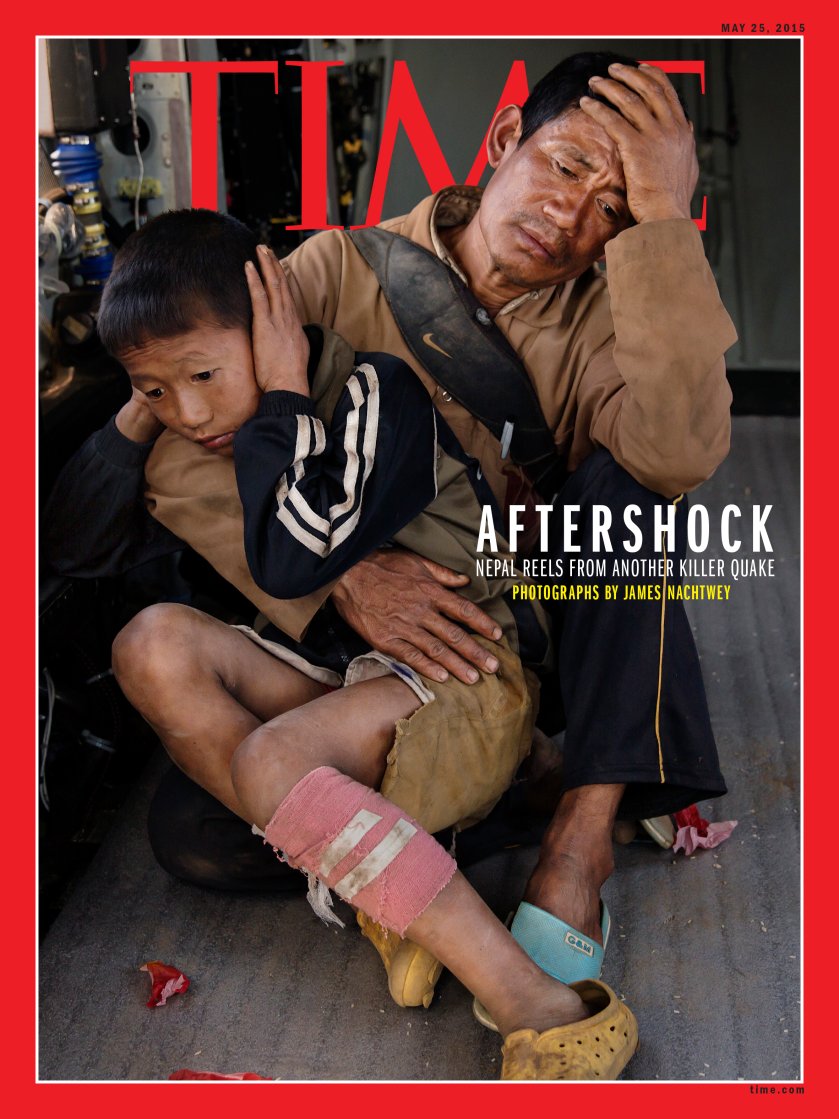Those in the remote mountains face the greatest challenge
Gorkha was a sitting target. Most of the houses in this mountainous district northwest of Nepal’s capital, Kathmandu, were made of little more than stone or bricks bonded together with mud. That meant they were easily destroyed when tremors from a 7.8-magnitude earthquake rippled across the country just before noon on April 25, killing more than 8,000 people. By May 5, when TIME photographer James Nachtwey arrived in the remote village of Barpak, in the northern part of Gorkha, near the epicenter of the quake, “there wasn’t much left” standing, he says. The tremors “basically shook the structures apart,” leaving irregular piles of stone and twisted wooden frames where there were once homes.
Worst of all, there was more to come. After Nachtwey left Nepal, as relief and rescue teams finally spread out across the impoverished Himalayan nation, there was a second seismic blow. On May 12, a 7.3-magnitude quake erupted at the eastern end of the same section of the geological fault that had caused the earlier temblor. In Kathmandu, UNICEF spokesman Kent Page was surveying damage from the original quake when the ground began to shake again. He and others were in a school building already covered with cracks when the aftershock came “very fast, very loud,” he says. “After about a second and a half we realized what was going on, and we ran into the courtyard of the school.”
They were lucky. The second quake killed at least 66 people, including one in Tibet and at least 17 in India. Along with the loss of life, this quake reinforced a sense of panic that was visible on faces young and old in Kathmandu as families fled their homes and slept in parks and other open spaces in the aftermath of the April 25 quake. “People were starting to think, O.K., that’s behind us … and then this thing hit,” says Page. In the capital, people swarmed back out into the streets. Near the epicenter of the second quake, between Kathmandu and Mount Everest, the shaking triggered fresh building collapses and landslides.
Earthquakes are a fact of life in Nepal. The ancient underground slabs of rock known as the Indian and Eurasian plates are constantly colliding beneath the country. When there is a sudden, large movement at that collision point, the pent-up energy escapes in the form of earthquakes. As the large tremors on May 12 showed, aftershocks big and small remain a risk for Nepal.
How do you rebuild when the ground beneath your feet could shift at any moment? Back in Gorkha, Nachtwey bore witness to the resolve among the villagers to pick up the pieces after the April 25 quake. Other than food drops from the Indian army, the villagers of Barpak were “completely on their own,” says Nachtwey. But, he adds, “they showed great equanimity” as they collected what was left of their homes and prepared to rebuild their lives.
Gorkha is the region to which the fearsome Gurkha regiments of the British and Indian armies trace their historical origins. The Gurkhas have long been renowned for their strength and resilience, and after the second big shock on May 12–with the risk of further jolts in the future–those qualities will be needed from Nepalis like never before.
